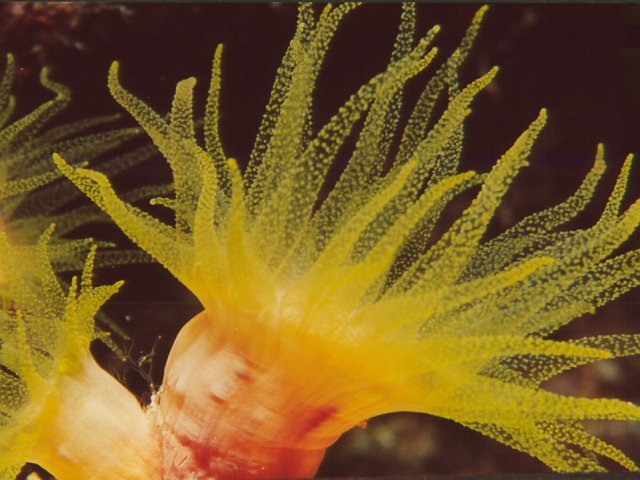
Photo copyright Tim Nicholson.
Taken in the Egyptian Red Sea.
Hard coral, Tubastraea aurea
The cup coral Tubastraea aurea is the pretty, orange, tubular coral which you see growing in underhangs, and drop-offs and reef slopes in strong currents. At night coral skeleton (corallum) is hidden by lovely ring of bright yellow tentacles. During the day the tentacles are retracted into the coral tube.
The name comes from the Latin for tube (tubus) and the Greek for star (astron). The skeletal tubes measure 5-15 mm across and protrude by 10 mm or more from the coral surface. Tubastraea species occur from the surface to depths of nearly 1500 m. There are four or five species throughout shallow Indo-Pacific waters (Red Sea, Thailand, Indonesia, Hawaii, etc.).
As Tubastraea grow in low light, they lack symbiotic algae (which require light to photosynthesise). This in turn means that they grow relatively slowly and do not contribute to reef building.
Further Reading
Corals of the World, by Dr Elizabeth Wood, T.F.H. Publications Inc. ISBN: 0-87666-809-0.
The Underwater Photographer: Digital and Traditional Techniques, by by Martin Edge, Paperback, 536 pages (2009)
